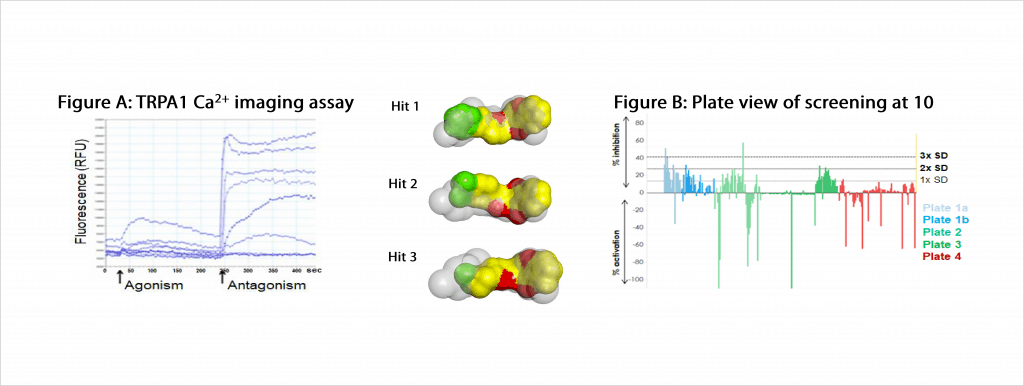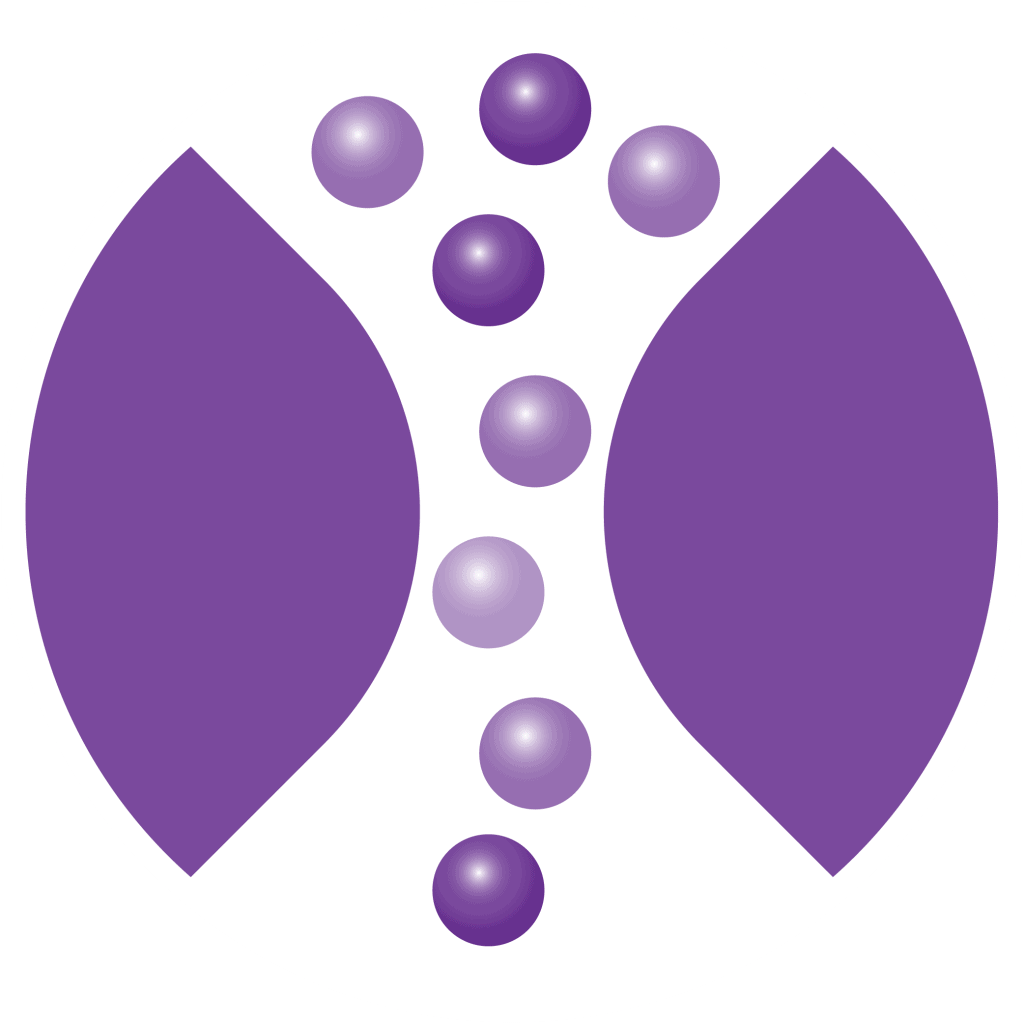Identification of novel ion channel binders: TRPA1 antagonist case study

Case Study
Case Study title
Identification of novel ion channel binders: TRPA1 antagonist case study
Authors
Ray Boffey¹, Chris Richardson¹, Duncan Hannah¹, Marc Rogers², Robert Kirby², Ian Witton², Trevor Perrior¹
- Domainex Ltd, Chesterford Research Park, Little Chesterford, Saffron Walden, CB10 1XL
- Metrion Biosciences Ltd, Riverside 3; Suite 1, Granta Park, Cambridge, CB21 6AD, United Kingdom
Identification of novel ion-channel binders: TRPA1 antagonist contents
Close
Introduction


- Domainex and Metrion Biosciences have formed an alliance to identify new chemical hits against ion-channel targets. Key to this collaboration are Domainex’s experience in hit identification and Metrion Bioscience’s expertise in ion channel screening and pharmacology.
- The transient receptor potential cation channel A1 (TRPA1) is a voltage-dependent non-selective cation channel. It is an established therapeutic target, antagonists of which may have utility in the treatment of pain and the management of chronic cough. Bautista et al¹ described TRPA1 as a “gatekeeper of chronic inflammatory disorders of the skin, airways, and gastrointestinal tract”.
- As part of this alliance, Domainex applied its proprietary LeadBuilder platform to identify commercial compounds for screening based on Metrion’s validated agonist and antagonist profiles of reference compounds. Compounds were then purchased and screened at Metrion Biosciences through a cascade of assays, to identify true antagonists of TRPA1.

LeadBuilder platform

- Domainex’s LeadBuilder platform can be applied to both structure-based and ligand-based projects and has demonstrated success in identifying optimizable hit compounds across a range of different protein families and therapeutic areas.
- A central component of the LeadBuilder philosophy is the emphasis on quality compounds. Domainex’s NICE (“Number of Interesting Chemical Entities”) virtual screening collection contains a highly curated database of ~1.5 million commercially available compounds from reliable compound vendors with good physicochemical properties and predicted solubility.
- As part of the curation process, the database is stringently filtered to remove not just reactive compounds but known frequent hitter motifs and compounds likely to interfere in assays.
Approach
- Therefore, we decided to pursue a ligand-gated based approach to hit ID, focused on compounds with desired receptor pharmacology.
- Three chemotypes were chosen, exemplified by Hydra HC-030031, AMG-0902 and Novartis compound 31, which had been confirmed as true antagonists by Metrion Biosciences. A key aim of this study was to assess whether it was possible to carry out hit identification on a subset of confirmed ligands which may not share a common binding site or structural overlay. The three ligands have similar potencies against human and rodent TRPA1 channels and do not exhibit desensitising agonism.

- For each series, available SAR was collated and analysed to assess key pharmacophoric features and ligand conformational analysis was undertaken. A total of 8 pharmacophores were then generated.
- Additionally, the NMR structure of tarantula Protoxin-1 venom (pdb code: 2M9L)⁶ and associated site-directed mutagenesis (SDM) data was used to generate a further 4 pharmacophores based on those identified residues with surface exposed side chains in one or more of the ensemble of NMR structures.
- Pharmacophores were used to search the NICE dataset and, for each series, matches were shortlisted based on quality of the fit to the pharmacophore, assessment of the matching ligand conformation, visual inspection by a computational and a medicinal chemist and clustering to give the final diverse set of available compounds for purchase.
Results
- 400 compounds were purchased and assayed against human TRPA1 at 10 µM in a validated Ca²⁺ imaging assay able to detect agonists and antagonists.
- 14 hits were progressed to IC₅₀ determination, revealing 3 novel antagonists.
- The AMG-0902 derived pharmacophores produced the majority of the hit compounds with the HC-030031 and toxin derived pharmacophores also producing antagonist hits.
- The hits were a balance between compounds closely related to one or more query molecules, such as the match illustrated, and more diverse compounds.

Summary
- Domainex has applied its LeadBuilder platform to the identification of antagonists for the therapeutically relevant ion channel TRPA1.
- The ligand-based study used NMR derived structural data and site-directed mutagenesis data as well as small molecule SAR.
- Small molecule hits have been obtained from multiple chemotypes with micromolar potency. These include compounds with high similarity to the query molecules and also some more diverse structures. The compound structures are suitable for optimisation as part of a drug discovery project.
- Metrion Biosciences offers expertise in detailed pharmacologic evaluation of ligands and this was used to underpin the ligand selection used for the virtual screen.
Services/Contact
Domainex welcomes interest from potential collaborators. Please contact Dr Ray Boffey at Domainex on: ray.boffey@domainex.co.uk
Metrion Biosciences offers high quality ion channel screening services on a CRO or FTE basis. Please contact info@metrionbiosciences.com
References
- Bautista et al, Ann Rev Physiol, 75, 181, (2013);
- Paulsen et al, Nature, 520, 511, (2015);
- Chen and Hackos, Naunyn Schmiedebergs Arch Pharmacol, 388(4), 451, 2015);
- Lehto et al, Mol Pain, 12, (2016),PMID:27899696;
- Rooney et al, J Med Chem, 57(12), 5129, (2014);
- Gui et al, Curr Biol, 24, 473, (2014);
- ChEMBL24: www.ebi.ac.uk/chembl;
- Schenkel et al, J Med Chem, 59(6), 2794, (2016)


Let’s work together
What are your specific ion channel and assay needs?
If you have any questions or would like to discuss your specific assay requirements, we will put you directly in touch with a member of our scientific team. Contact us today to discover more.
